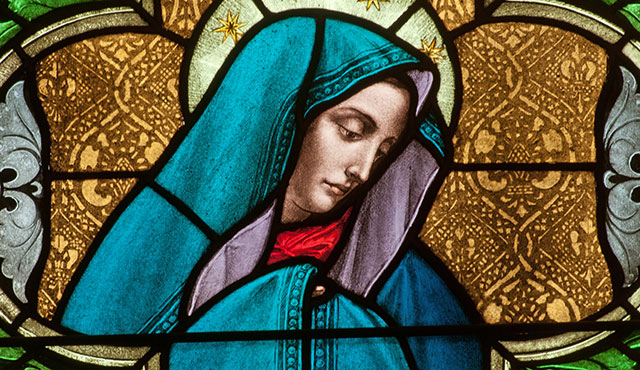Visions and apparitions of Mary have been an important part of the Catholic experience over the centuries and millennia across the globe. The mother of Jesus has been believed to come to comfort the afflicted, to urge prayer, to heal the sick and to unite the faithful throughout the world in times of trauma.
There have been countless visions of Mary, which are individual spiritual experiences. Actual apparitions, called Marian apparitions, are physical manifestations of the holy figure in which one or more witnesses have interactions.
A number of these apparitions have become important touchstones in the Catholic faith, inspiring pilgrimages through the centuries and are credited with miracles and healings.
“There has always been a Marian devotion in the church,” said Fr. Juan J. Gonzalez, Marist pastor of Notre Dame des Victoires in San Francisco, calling Mary the “first disciple.”
Some Marian apparitions are Vatican-approved encounters, such as Our Lady of Guadalupe, Lourdes, Knock and Fatima. Others, such as Our Lady of La Vang, which celebrates the appearance of Mary in Vietnam are followed by certain communities. And others, such as the image of the Virgin of Guadalupe visible in the bark of a tree near Pinto Lake in Central California, are more obscure but still draw legions of devotees.
Two Marian apparitions with particular resonance locally are the Virgin of Guadalupe in Mexico and Our Lady of La Vang in Vietnam.
The Feast of Our Lady of Guadalupe, the patroness of the Americas, is an important day in the calendar each year in December and a Holy Day of Obligation in Mexico.
It commemorates the encounters between Mary and Cuauhtlatoatzin native Juan Diego in Mexico in 1531, in which she asked that a church be built in her honor. After Diego was twice rebuffed by the archbishop in requesting the church the Virgin Mary had him gather flowers in his cloak, or tilma. When the peasant returned to the bishop, a cascade of roses fell from his jacket and a mysterious, ornate image of Our Lady was revealed in the garment. The cloak remains on display and in good condition at the basilica built in Mexico and is visited by millions each year. The image remains one of the most recognizable in Latin culture and the church.
Pope Leo XIII granted the venerated apparition a Canonical Coronation in 1895.
Gonzalez says the message of Mary and her arrival at a time of colonization by the Spanish of Mexico were as important as the actual miracle of the cloak.
“There is a message from Our Lady that has echoed through the Americas of her being present for the people,” Gonzalez said. “In post-conquest she comes to support and be with them in their time of tribulation and trials.”
Similarly, Our Lady of La Vang memorializes Mary by her appearance with an infant and two angels to persecuted Catholics in the Quang Tri province in Central Vietnam in 1798. The refugees had fled to the jungle and were sick. According to the accounts, Mary comforted them and taught them how to make medicine from local herbs.
Pope John Paul recognized the importance of the event. La Vang became the National Marian Center of Vietnam in 1961 and Pope John XXIII elevated the Church of Our Lady of La Vang to the rank of a minor basilica.
Salvatore M. Perrella, an expert in dogma and Mariology from the Mariunum Pontifical School in Rome, told the Catholic News Agency in 2008 that Marian apparitions have been reported more than 1,500 times over the years. At that time, 295 had been investigated by the Holy See and 11 (now 12) approved. In May 2008 the 17th and 18th century apparition of Our Lady of Laus was approved.
Perrella said “discernment about the veracity” of apparitions has typically fallen to the diocesan bishop or archbishop and to the Pope. Investigations can take years, if not generations, to complete and centuries to approve. They look for “precise information,” such as theological analysis of the message of the apparition, examinations of the witnesses or seers and their relationship or Communion with the Church, and other factors like miracles and healings.
Marian apparitions once ruled genuine by the Church, may bolster faith, but Perrella told the Catholic News Service, “do not add to the revelation given to the Church in sacred scripture, but rather they help to make it current during a specific period in history.”
Pope Francis stressed the importance of the message of Mary over the medium of an apparition. In 2017, on the eve of the 100th anniversary of the apparitions of Our Lady of Fatima in Portugal, Francis asked parishioners to reflect on the Mary they venerate.
Is it, he asked, “a woman blessed because she believed always and everywhere in God’s words, or a ‘plaster statue’ from whom we beg favors at little cost?”

